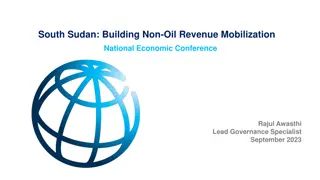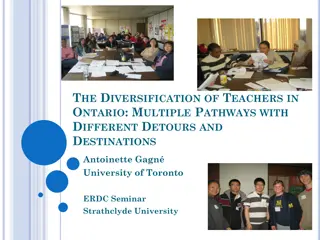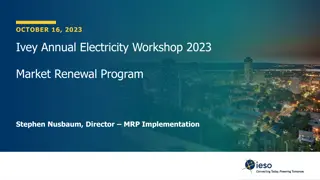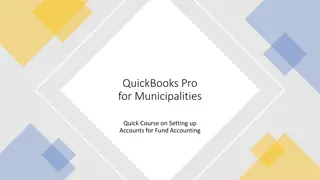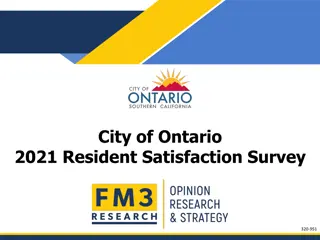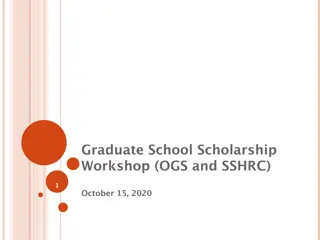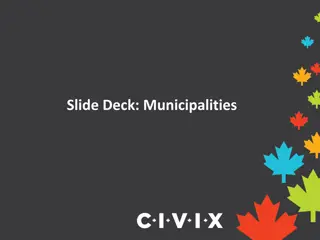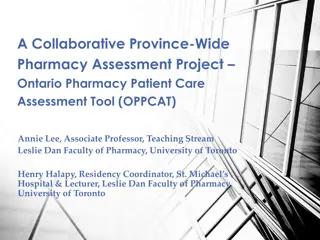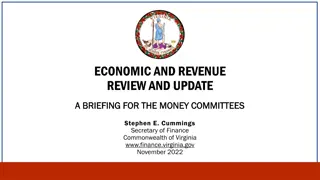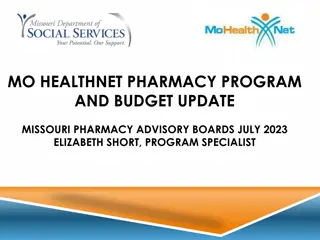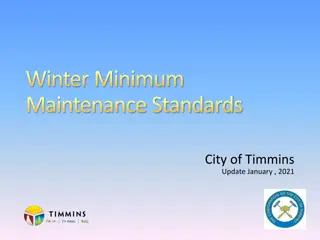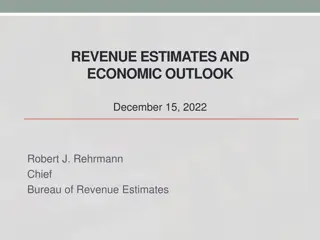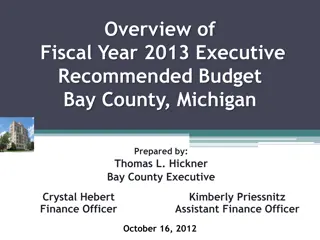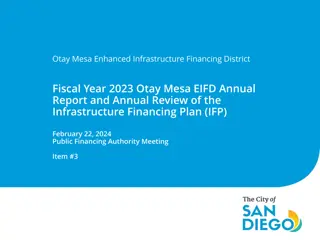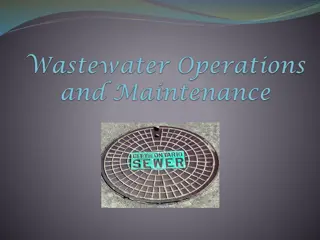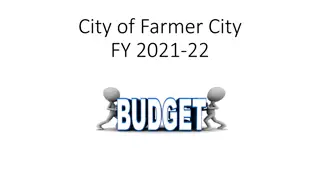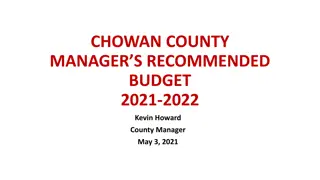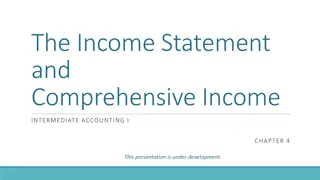Overview of Ontario's Expenditures and Revenues
Ontario's projected expenditures for 2018-2019 are around $158 billion, with 30 ministries grouped into six major sectors. The top spending sectors include Health, Education, Other Programs, and Interest on Debt. Revenue sources for the same fiscal year are projected to be approximately $152 billion, coming from Taxes, Transfer Payments, Non-Tax Revenue, and Government Enterprises.
Download Presentation

Please find below an Image/Link to download the presentation.
The content on the website is provided AS IS for your information and personal use only. It may not be sold, licensed, or shared on other websites without obtaining consent from the author. Download presentation by click this link. If you encounter any issues during the download, it is possible that the publisher has removed the file from their server.
E N D
Presentation Transcript
Slide Deck 15B: Ontarios Expenditures and Revenues
Ontarios Expenditures Ontario has projected its expenditures will be about $158 billion in 2018-2019. Ontario has 30 ministries which are grouped into six major sectors.
Ontarios 30 Ministries Agriculture and food; Children and youth services; Citizenship and immigration; Community and social Services; Community safety and correctional services; Consumer Services; Economic development, trade and employment; Education; Energy; Environment; Francophone affairs; Health delivery and long- term care; Health promotion and sport; Indigenous affairs; Infrastructure; Labour; Municipal affairs and housing; Natural Resources; Northern development and mines; Provincial law and courts; Research and Innovation; Rural affairs; Tourism and culture; Training, colleges and universities; Transportation.
7 Spending Sectors Children and Social Services Sector Education Sector Health Sector Justice Sector Postsecondary and Training Sector Other Programs (all other ministries) Interest on the Debt
% Breakdown among Sectors Health Sector 38.7% Education Sector 18.5% Other Programs 12.9% Interest on Debt 12.2% Children and Social Services Sector 11.3% Postsecondary and Training Sector 7.3% Justice Sector 3.2%
Ontarios Revenues Revenue is the money that Ontario brings in from a variety of sources to pay for its expenditures - public services, programs and government operations. Ontario s projected revenues for the 2018-2019 fiscal year are about $152 billion.
Where does it come from? Taxes Transfer Payments Non-Tax Revenue Government Enterprises
Taxes Taxes are levies or fees individuals or businesses are required to pay in order to pay for public services and contribute to the government in the province and country in which they live or operate. Taxes make up the majority of Ontario s total revenue.
Types of Taxes In Ontario, three taxes bring in the largest amount of revenue. 1.Personal 2.Corporate 3.Sales Others include Employer Health Tax, gasoline and fuel taxes, and the Ontario Health Premium.
Personal Income Tax A percentage of the money you earn from a job or investments must be remitted to the government. In Ontario, personal income tax ranges from 20-40% based on the level of your income. Between 5-10% goes to the provincial government, while the rest goes to the federal government.
Corporate Tax Businesses are also required to pay the government a percentage of their profits. In Ontario, the corporate tax rate ranges from 15-28%, depending on the size of your business. Between 3.5- 11.5% goes to the provincial government and the rest goes to the federal government.
Sales Tax Individuals and businesses are required to pay a sales tax on the goods and services they purchase. The most common sales tax in Ontario is the Harmonized Sales Tax (HST) which is 13%. This is also split among the provincial (8%) and federal (5%) governments.
Federal Transfer Payments Sums of money that are transferred from the federal government to the provinces and territories to pay for public services. Transfer payments help Ontario cover the costs of Healthcare, Education and Welfare.
Non-Tax Revenue Non-Tax Revenue refers to money collected by the Ontario government through fees and penalties. Some examples include: user fees for provincial parks, vehicle licensing, permits and speeding tickets.
Government Enterprises Revenue also comes from businesses (enterprises) that the Ontario government owns and operates. These include the Liquor Control Board of Ontario (LCBO), Ontario Lottery and Gaming Corporation (OLG), Hydro One and Ontario Power Generation (OPG).
Revenues % Breakdown Taxes 66.5% (22.2% Personal, 17.5% Sales, 10.3% Corporations, 16.5% Other taxes) Transfer Payments 17.5% Non-Tax Revenue 12.6% Government Enterprises 3.4%






